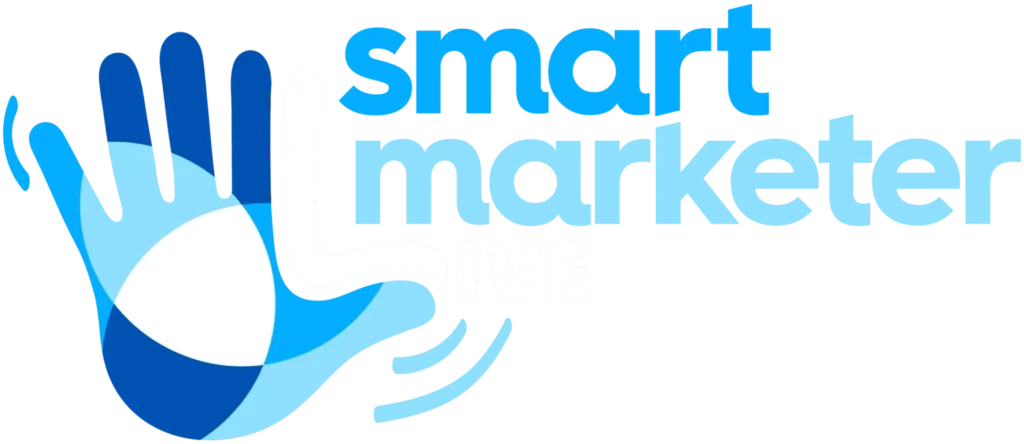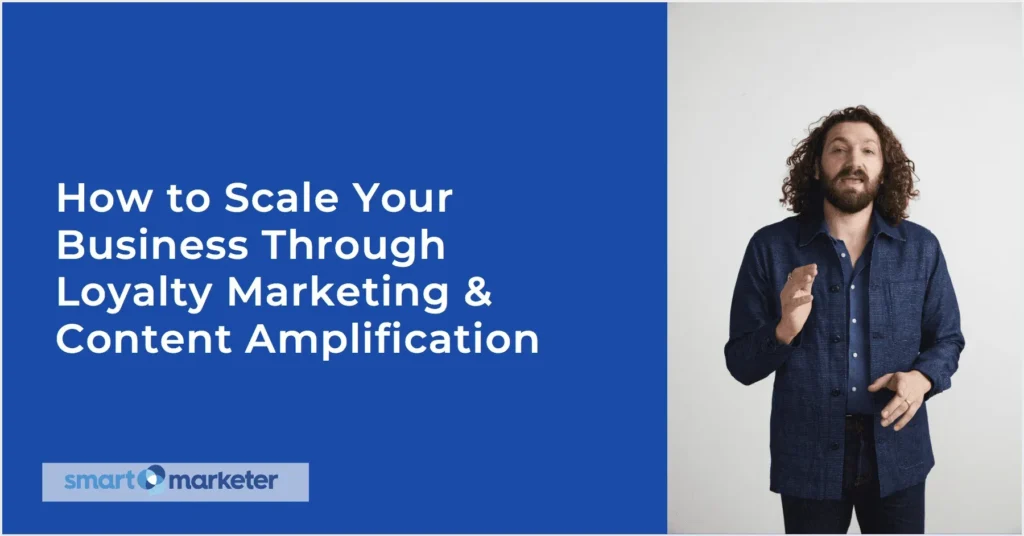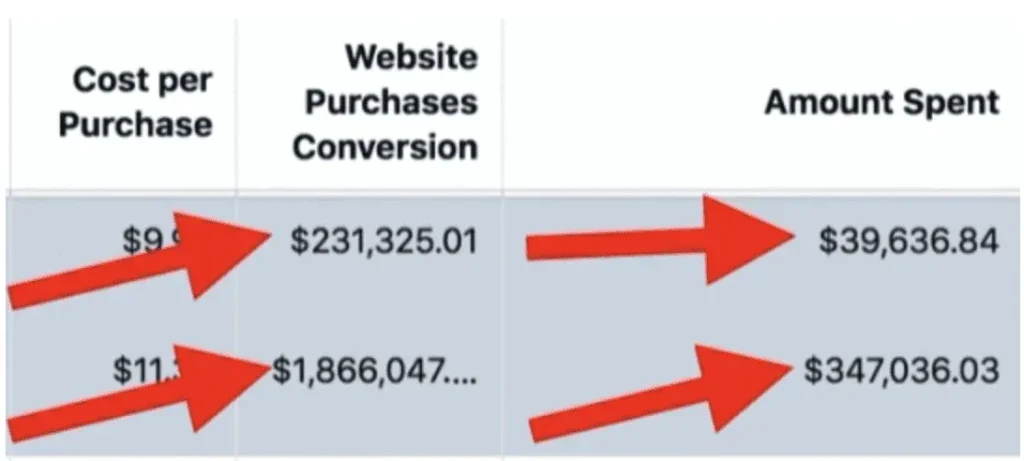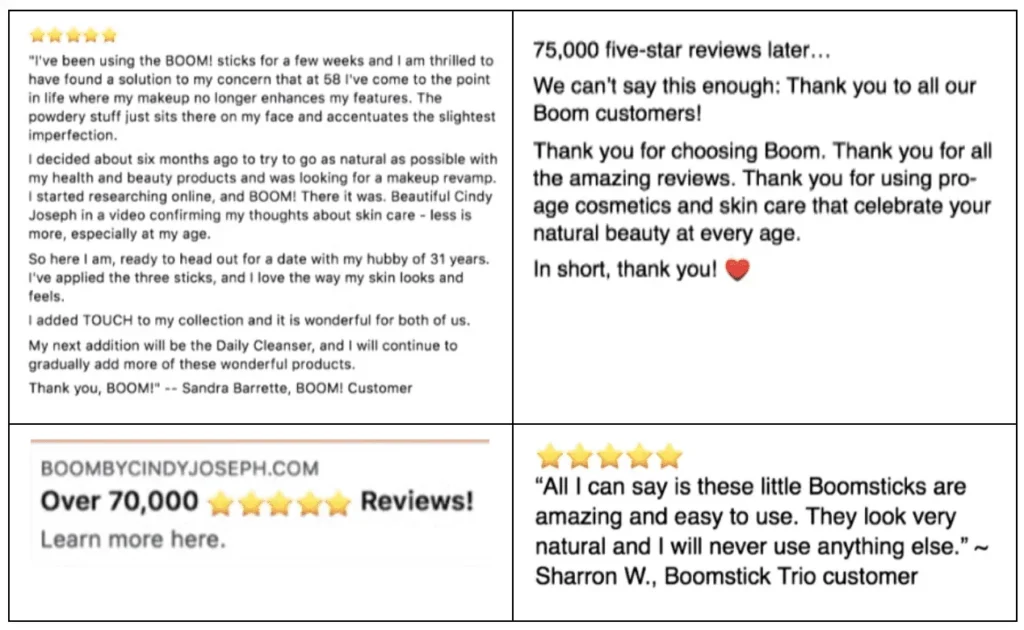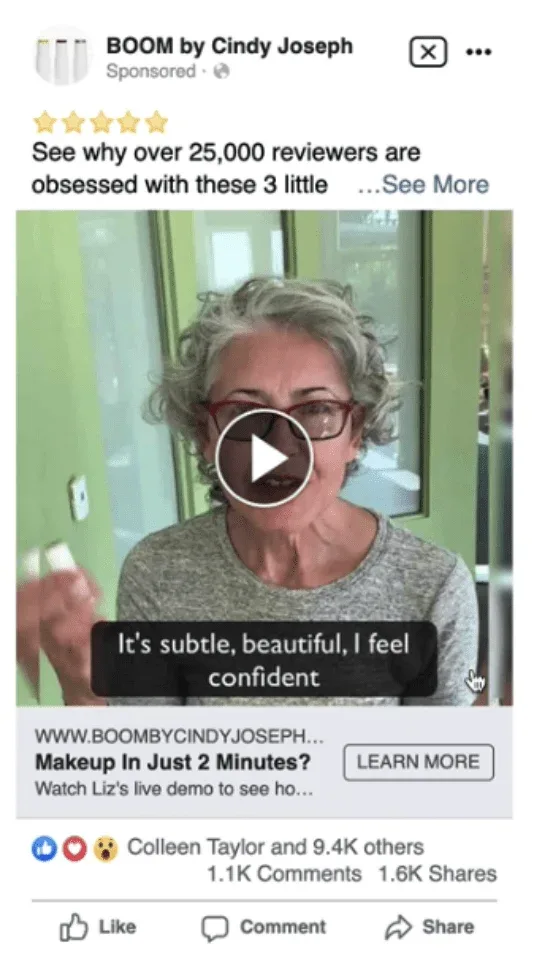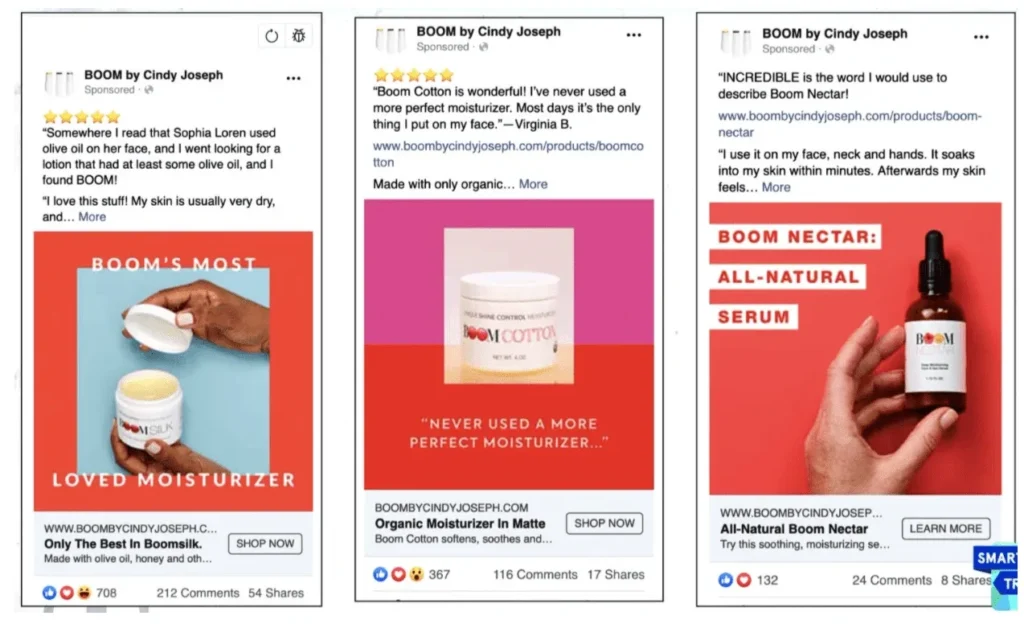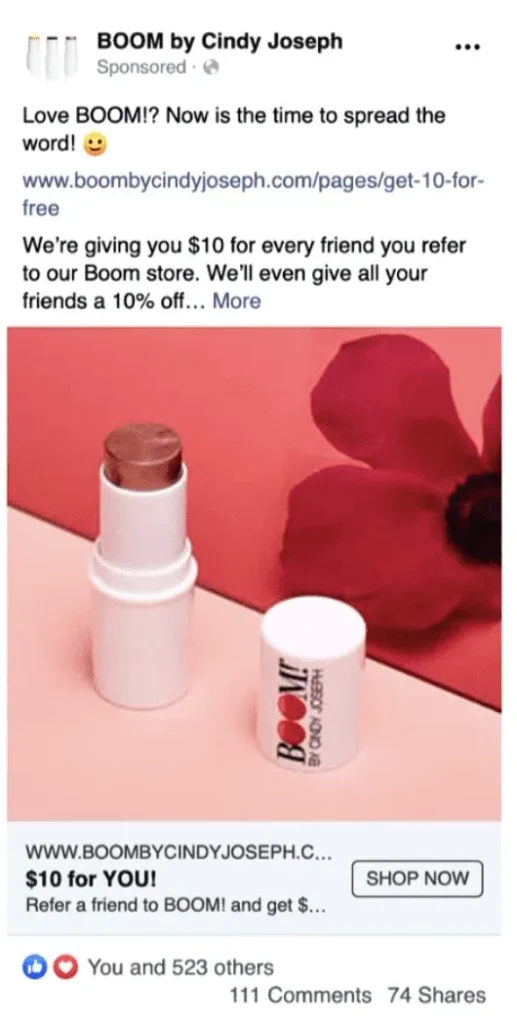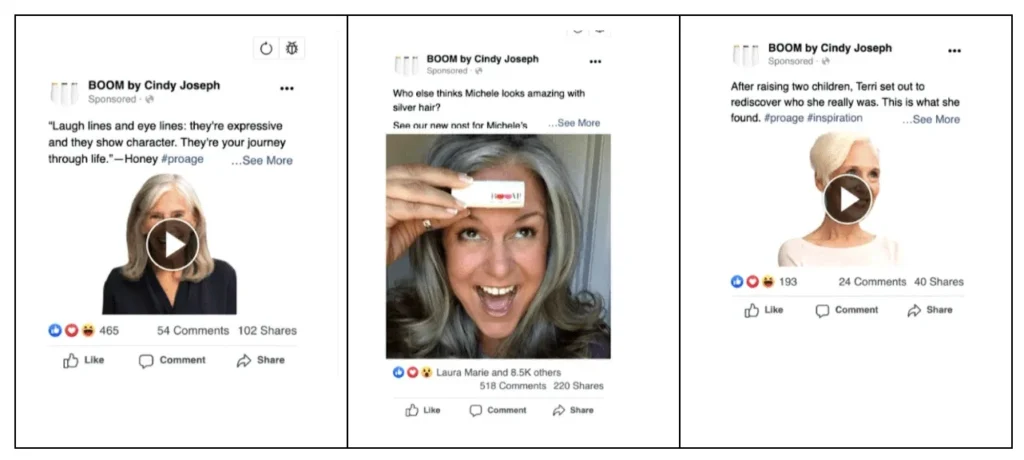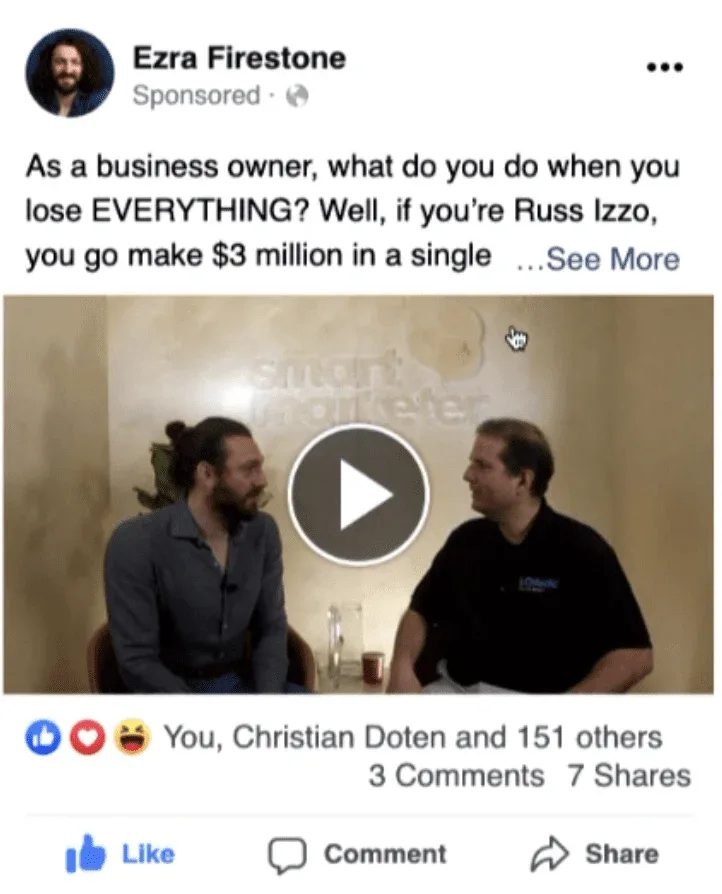We marketers talk a lot about how to scale a business by reaching new people—new audiences, new leads, new customers. And don’t get me wrong: I’m always looking for new ways to generate new customers.
But in this article I want to hit on a topic that doesn’t get talked about as much. It might not be as sexy as new customer acquisition, but it’s still a super important part of growing any business:
Marketing to existing customers to generate repeat purchases and referrals.
I’m going to refer to this as “loyalty marketing.”
Think about it this way: your existing customers are your most valuable audience. You know they’re willing to buy from you, because they’ve already done it. That’s why it often pays off big-time to continue marketing to these people after the initial sale with an upsell, cross-sell, or other promotion.
We’ve fine-tuned this process over the years at BOOM! by Cindy Joseph. And in this article, I’m going to share some of the biggest insights we’ve learned about how to scale our business by maximizing the profit from our existing customers.
Why Is Loyalty Marketing So Important?
I’ll answer that question with a screenshot…
In case you missed those two honking red arrows, they point out that about $24 out of $59 million in BOOM! revenue came from returning buyers – that’s 41% of revenue! (This screenshot is a little old but it still illustrates my point).
That means if we ignored loyalty marketing to our existing customers, our business would literally be half the size it is now.
A repeat purchase rate of 41% is good, but it’s not anything out of the realm of possibility. I think most businesses should shoot for a repeat purchase rate in the 25-50% range. Obviously this can depend a lot on what you sell, but if you’re below 25% I believe you’re missing out on a big opportunity to increase your sales and especially your PROFIT.
Profit.
That’s the awesome thing about loyalty marketing. Because you’re promoting to people who have already bought from you, they’re much more likely to buy again if you just show them a relevant offer.
Far and away, the most profitable ads I have are “people who bought x and not y.”
See for yourself:
Incidentally, this is why expanding your product line is so important. Once you bring someone into your business, you want to be able to sell them more relevant products in the future. Doing that goes a long way in growing your customer lifetime value.
And having a whole product line to promote allows you to create super-profitable bottom-of-funnel ads. So let’s talk about that next.
How to Create Killer Loyalty Ads
In a way, loyalty ads are a form of retargeting. A lot of people tend to think of retargeting ads as being “easier” than cold-traffic ads. And it’s true: it’s definitely easier to get a sale from somebody who’s bought from you before than from a complete stranger.
But that’s no excuse to phone it in with your retargeting ads. As I just shared, there’s a lot of money to be made here. That’s why I recommend putting just as much care and attention into these ads as your cold-traffic ads. Trust me—it will pay off.
Here are some loyalty ad tips to help you generate more repeat purchases:
Social Proof FTW
No matter how you look at it, social proof is always a good thing. But we find it especially effective in the loyalty pillar.
You can get creative with the way you display social proof in your ads. Here are a couple ways we’ve used it—feel free to model these or use them for inspiration:
These are all in the main text area of the ad, except for the bottom-left example, which is a headline/description.
Also, notice the example in the top-left is what we call “long-form story social proof.” It’s a longer testimonial told in a story format from the point of view of a customer. These can be a really powerful way of connecting with your target market.
Here’s another really fantastic way of getting social proof into your ads:
At BOOM! by Cindy Joseph, we created an Ambassador Program that has been an amazing source of killer new video creative. And it’s all built with the help of some of our best customers.
The idea goes like this:
We send our products to some women and ask them to record videos of them talking about what they like about the products and why. And just like that, voila—we get unique, user-generated testimonial videos to use in our ads.
If you have a sales video that’s already working, try splicing these customer videos at the beginning. When we did that, it resulted in some of the best-performing ads we’ve had in a long time:
I think everybody should try an ambassador program. You have a lot to gain and almost nothing to lose.
RELATED: My #1 Facebook Ad Formula: How I Generated $2.8 Million with 1 Cold Traffic Campaign
Use Facebook’s Slideshow Feature
Motion graphic videos can work really well on Facebook. They have the eye-catching benefits of video, but they’re much faster and easier to create.
They work so well that Facebook actually built a tool that lets you create these ads right inside their ad platform!
I highly recommend giving it a shot. Basically you upload a bunch of graphics and Facebook will turn them into a GIF-like animation ad.
We like to use really bright, colorful backgrounds when we do this:
As you can probably imagine, these ads do a great job of standing out in the newsfeed and grabbing attention.
(Notice that each of these ads also contains social proof from a customer testimonial.)
Referral Ads
Last but not least, you can use Facebook ads to generate referrals from your best customers. Not many people use this strategy, which is a shame, because it works really well.
For this example, we targeted our highest lifetime value customers and basically asked them to share our brand with their friends. If they did, they would get $10 off and their friends would save 10%.
It’s a fairly standard referral program, but we got a lot more leads than usual by promoting it directly to our best customers. Hint-hint.
Why Content Is a Huge Piece of the Loyalty Pie
Up until now, I’ve focused on the benefits and strategies behind running ads to your existing customers. But now I want to spend some time on content.
Not many people associate content with their customer retention strategy. A lot of people assume that content is intended to generate awareness and nurture leads. And sure, it can definitely do those things.
But content is a crucial part of loyalty marketing, too. Here’s why:
When you’re dealing with longtime customers, people who have a relationship with your brand, you can’t just send them sale after sale after sale. If you do that, they’re going to tune you out real quick.
That’s why it’s so important to intersperse your promotional messages with some valuable content to keep people interested. Over the long term, it helps maintain a more responsive audience of buyers.
My businesses get a lot of repeat purchases, and one big reason why is because of our content amplification strategy. Or as I call it, the “Engage & Filter Method.”
The Engage & Filter Method
This method is pretty simple, really. Basically you take a piece of content (article, image, video) and put it in front of people (buyers, fans, subscribers). Then you filter out the people who engage with the content, and run ads to them.
Get it? “Engage” and “filter.”
Typically I recommend allocating 5-15% of your spend on content amplification. But you might spend more if you’re an influencer brand, since those brands depend on using content to generate authority.
For example, here’s a recent blog post we spent $82k on (22% of our spend during this timeframe):
Even though the primary goal of content like this isn’t necessarily to generate leads, in our case it does that too—mainly by bringing people back to the site.
Here’s an example of what some of our amplified content looks like on Facebook:
Here’s one for Smart Marketer—this one didn’t even have a call-to-action anywhere on it. It was just a phenomenal interview I really wanted to make sure people saw:
Like I said, influencer brands (like Smart Marketer) are liable to spend more money on content amplification than traditional brands. In fact, a lot of influencer brands start with content first. Traditional brands will probably start with the direct response/sales side of things and then create content to support their products.
Both approaches work, they’re just coming at the problem from opposite directions.
The Part of Scaling Nobody Talks About
To recap, loyalty marketing and content amplification to your existing customers is a hugely valuable strategy for 3 reasons:
- It’s easier to monetize existing customers.
- Loyalty marketing to customers is much more profitable.
- It keeps your advocates & fans engaged, providing you with a great source of user-generated content and referrals.
Most businesses don’t do enough loyalty marketing. They put all their attention on getting new customers, but then once they get the customer, they don’t take full advantage.
Something else to keep in mind: loyalty marketing helps improve your cold traffic ads, too. Because when you have loyalty marketing campaigns in place to maximize your customer lifetime value, every new customer you generate through cold traffic is that much more profitable—which makes it a whole lot easier to scale.

